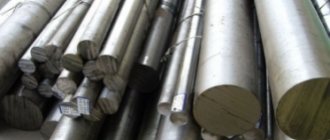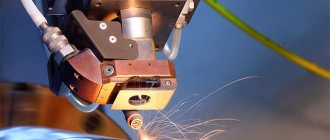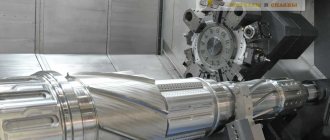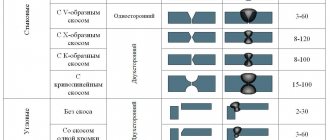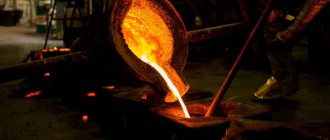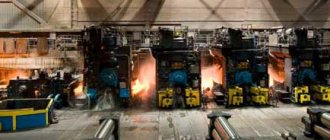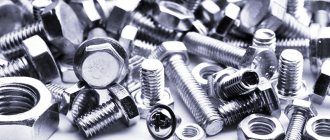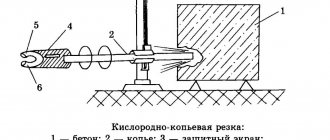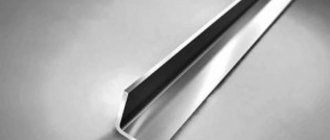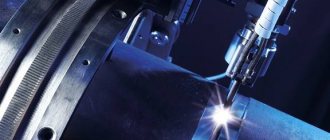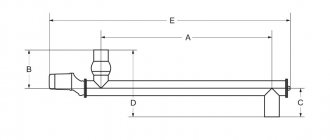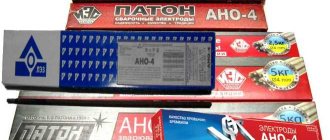While laying floor coverings, I regularly advise on the choice of materials. And I hear people asking the question: “Which wear resistance class of laminate is best to choose for an apartment”? And they immediately answer: “33.” Such awareness cannot but rejoice. But there is one caveat. This feature lies in the same, at first glance, concepts. Wear resistance and service classes - what's the difference? I will try to compile a detailed review, leave my feedback and recommendations.
The difference lies in the hardness of the film (designation AC3, AC4, AC5, AC6) and the density of the HDF board itself (Class 31, 32, 33, 34), respectively.
You can quickly get acquainted with my works, prices in the VK GROUP
Laminate class table:
Film hardness is a relative concept. The decorated pattern is not resistant to scratches and impacts. Melamine or acrylic resin is applied on top of the decor in production. In modern expensive collections, melamine contains various additives: such as corundum (aluminum oxide) to give even greater strength to the coating. Accordingly, a larger layer and the peculiarity of the finishing protective composition add better wear resistance to the product.
Laminate Leroy Merlin 31 class
Laminate Leroy Merlin class 32
Laminate Leroy Merlin class 33
Laminate Yandex-Market 32 class
Laminate Yandex-Market 33 class
Laminate Yandex Market 34 class
Everything is clear about the hardness of the protective film. I’ll explain in a nutshell about HDF (high-density fiberboard, also known as MDF). Wood board is a finely dispersed fraction (wood fibers) obtained by splitting raw materials in a defibrator. In no case should it be confused with the larger shavings that form the basis of chipboard (chipboard).
The fibers are mixed with paraffin and rosin, which give the material moisture resistance. Synthetic resins are added to improve physical and mechanical properties. Using the hot pressing method we obtain a finished sheet composite. Depending on the pressure of the press and the addition of various resins, a board of varying densities is produced. For HDF, this value should exceed 850 kg/m3, which corresponds to GOST for fiberboard grade “T” - solid.
A little earlier, about twenty years ago, the wear resistance of laminated floors was measured in this way. The abrasive wheel rotated on the surface of the protective coating layer. When the top film was worn out, the result was recorded by the number of revolutions. As a result, wear resistance was calculated in revolutions. The phrase: “how many revolutions does this laminate have?” replaced: “What class is this laminate?”), firmly entrenched in the consumer’s understanding as a determinant of the quality of the coating.
- Which key connection is better - article
This measurement method had inaccuracies in determining the resistance of the laminate to aggressive environments and shock loads. The number of revolutions (taber test) directly depended on the grain size of the rotating head.
As a result of the introduction of uniform Taber test standards, the wear resistance of speakers is currently indicated. On packages with material, the designation can be found on the end. The most common compliances are AC5/33 or AC4/32 class.
2.Properties and application of wear-resistant materials
Depending on the mechanical and frictional properties, wear-resistant materials are divided into three groups
:
1.Materials with high surface hardness.
2. Friction materials with a high coefficient of sliding friction.
3. Antifriction materials with a low coefficient of sliding friction.
2.1 Materials with high surface hardness.
2.1.1 Materials resistant to abrasive wear.
The greatest wear resistance is possessed by materials whose structure consists of a solid carbide phase and a high-strength matrix that holds them.
A) Carbide alloys are used under the most severe operating conditions in the form of cast and surfacing materials. They are alloys with high carbon content (up to 4%) and carbide-forming elements (Cr, W, Ti).
B) The structure of the matrix phase is regulated by the introduction of manganese or nickel. It can be martensitic, austenitic-martensitic, austenitic.
C) For parts operating without shock loads, alloys with a martensitic structure are used. 25Х38, 30Х23Г2С2Т.
D) Parts operating under significant shock loads - excavator bucket teeth, jackhammer peaks, etc., are made from alloys with a high manganese content with an austenitic-martensitic or austenitic matrix. 37Х7Г7С, 110Г13, 30Г34.
D) For machine parts operating under average wear conditions, sintered hard alloys are used, the structure of which consists of special carbides (WC, TiC, TaC) bonded with cobalt. As well as high-carbon steels (martensite + carbides structure) - X12, X12M, R18, R6M5 and other tool steels.
E) Low- and medium-carbon steels with various types of surface hardening and cast irons are used for easier wear conditions. G) For parts operating under boundary lubrication conditions - cylinder liners, crankshafts, piston rings, etc., where abrasive wear accompanies other types of wear, for example, oxidative wear.
2.1.2 Fatigue resistant materials.
These materials are intended for mass-produced products such as rolling bearings and gears. High contact endurance can be ensured only with high surface hardness.
Bearing steel.
Rolling bearings operate under low dynamic loads, which allows them to be manufactured from relatively brittle high-carbon steels. ШХ4, ШХ15, ШХ15ГС, ШХ20ГС. The hardenability of steel increases as the chromium in the steel increases. The steel is supplied after spheroidizing annealing with a fine-grained pearlite structure 179 - 217НВ and increased requirements: carbide heterogeneity and contamination with non-metallic inclusions are strictly regulated.
ShKh4 steel for roller bearings of railway transport, after hardening with induction heating with a hardenability depth of up to 2 - 3 mm and a viscous core.
Steel 12ХН3А, 12Х2Н4А for large-sized roller bearings (diameter up to 2 m) is subjected to carburization to a great depth (3 - 6 mm).
Steel 95X18 for bearings operating in aggressive environments.
Steels for gears.
The main requirement is contact endurance, in addition to resistance to bending fatigue, wear resistance of profiles and tooth ends, and resistance to seizure. The choice of steel and hardening method depends on the operating conditions of the gear drive, technology requirements and available equipment.
For gears operating under high contact loads, case-hardened (nitro-carburized) alloy steels are used. At constant surface hardness, contact endurance increases with increasing thickness of the strengthened layer and core hardness. The thickness of the cemented layer is assumed to be (0.20 - 0.26) m (m is the wheel module), but not more than 2 mm. The surface hardness is 58 – 63HRC, the core hardness is 30 – 42HRC.
For heavily loaded gears (in gearboxes of helicopters, ships, airplanes) with a diameter of 150 - 600 mm or more, 20ХН3А, 12Х2Н4А, 18Х2Н4МА, etc. are used.
For small and medium-sized wheels of instruments and agricultural machines, 15Х, 15ХФ, 20ХР, etc. are used. Cementation and maintenance.
For automobile and tractor construction (mass production), alloy steels 18KhGT, 30KhGT, 20KhNM, 20KhGR, etc. after nitrocarburization are used sparingly. As well as complex alloy steels 12Kh2N4A, 18Kh2N4MA, 20Kh3MFA after ion nitrocarburization, which provides 2–3 times higher contact endurance than gas CTO.
For medium-loaded gears of complex configuration, the grinding of which is difficult, use 38Kh2MYuA, 40Kh, 40KhFA, etc. after nitriding. It must be remembered that nitriding provides high hardness, but due to the small thickness of the hardened layer, sublayer destruction is possible.
For small and medium-sized parts after surface or volumetric induction hardening followed by low tempering, steels 40, 45, 50G, 40Х, 40ХН or cheap 58 (55PP) of reduced hardenability are used. In terms of load capacity, they are inferior to case-hardened steels.
It is allowed for gears operating under low loads to be made from steel 40, 45, 40Х, 40ХН, etc. after normalization and improvement.
For wave gears and small gears operating at low loads and speeds, non-metallic materials are used: textolite, laminated plastics, polyamides-nylon, nylon. Used to drive speedometers and camshafts of cars, textile and food machines. Advantages: absence of vibration and noise, high chemical resistance.
2.1.3 Materials that are resistant to wear under conditions of high pressure and shock loads.
Friction with high pressures and shock loading is typical for the operation of tracks of tracked vehicles, crosspieces of railway rails, and excavator buckets.
and other details.
They are made from high-manganese austenitic steel 110G13L. Steel is poorly processed by cutting, so parts are produced by casting (the letter L in the steel grade) or forging. The high wear resistance of this steel is due to the ability of austenite to undergo strong strain hardening (work hardening).
TO – quenching in water from T = 1100°C. Obtaining a homogeneous austenitic structure. Under impact conditions, the hardness on the surface increases to 600HB and the steel becomes wear-resistant. But steel is not wear-resistant to abrasive wear.
Wear associated with impact loading of the surface is also observed during cavitation
which occurs during the operation of propellers, hydraulic turbine blades, and hydraulic pump cylinders.
Cavitation wear
create jets of liquid at the moment of collapse of gas or air bubbles (microimpacts).
08Х18Н10Т, 30Х10Г10, etc. are used as cavitation-resistant steels. When exposed to impact, the austenite of these steels experiences work hardening and partial martensitic transformation, the development of which consumes impact energy. Hardening of the steel surface under operating conditions makes it difficult for fatigue cracks to form.
Source
Non-metallic oxygen-free compounds
Silicon carbide SiC
Silicon carbide SiC (or carbocorundum) is a compound of silicon and carbon. In addition to the modification with a hexagonal crystal lattice (alpha - SiC), there is a modification with a cubic diamond-type structure (beta - SiC). Silicon carbide is characterized by high hardness, thermal conductivity, fire resistance, and specific electrical and semiconductor properties. Silicon carbide is chemically resistant (it is affected only by a mixture of nitric and hydrofluoric acids, as well as phosphoric acid at a temperature of +230 °C).
from silicon carbide using ceramic or powder technology. Non-porous polycrystalline materials produced by hot pressing or reaction sintering differ from porous ones in higher mechanical properties, thermal and electrical conductivity, and chemical resistance. Non-porous materials based on silicon carbide are used as special refractories, high-temperature heaters, end seals, and for the manufacture of parts exposed to intense corrosion and abrasive effects. Silicon carbide is a component of siliconized graphite , produced in accordance with TU 48-01-77-71.
| Silicon carbide modification | Density, t/m3 | Tdissociation, oC | E x 10-5, MPa |
| Hexagonal | 3,214 | 2780 | 4,08 |
| Cubic | 3,166 | 2830 | 4,013-4,324 |
Wear-resistant steel
Wear-resistant steels include alloys intended for use in extreme conditions. Thanks to their special chemical composition, they withstand severe abrasive wear, exceptional mechanical and compressive loads, sliding and friction. There are many manufacturers and types of rolled products on the high-strength steel market, which can be difficult to understand even for professionals. From this article you will learn how to choose the right wear-resistant steel, and why in different industries it is simply necessary to use high-quality wear-resistant alloys.
Tests to determine the class of laminate
Classification based on various tests according to EN 13329 for multi-layer floor coverings:
- The main one is the Taber test: an abrasive wheel is applied to the surface, wear resistance determines the number of revolutions until the protective layer is completely abraded.
- Long-term mechanical loads.
- Shock loads.
- Temperature effects (burning cigarette, coal).
- Delamination.
- Preservation of color and structure integrity under UV rays.
- Slip.
- Chemical resistance (to household detergents).
- Hygroscopicity (moisture absorption, deformation).
- Formaldehyde emissions.
We invite you to the Polov salons in Moscow and Odintsovo: see samples of floor coverings, ask related questions about operation and installation to managers, order inexpensive delivery and installation at a time convenient for you!
Characteristics of wear-resistant steels
The main property of wear-resistant steels is increased hardness, which is ensured by the presence of manganese and other alloying elements in the composition. Moreover, the stronger the load on the element, the more wear-resistant and hard the part becomes, and the destruction of the surface and internal structure does not occur. With high strength values, the material remains plastic, does not crumble, and can be welded. When choosing a high-strength alloy, it is important to consider the conditions and intensity of operation of the part or assembly. Hardened rolled products have increased resistance to all types of wear.
Characteristics of wear-resistant steels
The main property of wear-resistant steels is increased hardness, which is ensured by the presence of manganese and other alloying elements in the composition. Moreover, the stronger the load on the element, the more wear-resistant and hard the part becomes, and the destruction of the surface and internal structure does not occur. With high strength values, the material remains plastic, does not crumble, and can be welded. When choosing a high-strength alloy, it is important to consider the conditions and intensity of operation of the part or assembly. Hardened rolled products have increased resistance to all types of wear.
Types and grades of wear-resistant steels
When studying the classification and selection of wear-resistant alloys, it is necessary to take into account that a number of brands of domestic manufacturers are designated by indices, and foreign markings do not contain information on the chemical composition.
Ball bearing alloys GOST 801-78 (ШХ20, ШХ15)
– are a type of tool steel and have high strength and wear resistance, hardness and the required level of toughness.
High-manganese grades (G13L, 110G13L)
– in addition to manganese, the composition also includes iron, carbon, and chromium. They have the highest wear resistance, which is combined with low hardness and high strength. According to domestic standardization, alloys comply with GOST 977-88.
As you can see, the high quality and reliability of high-strength steels make their use justified in many industries and mechanical engineering. These alloys have firmly gained a position in the rolled metal market and are very popular.
Source
Classification of wear-resistant materials
Section I
"TRIBOTECHNICAL MATERIALS"
Lecture No. 1
Topic: “BASIC PRINCIPLES OF SELECTION OF MATERIALS FOR CONTACT INTERACTION IN MOBILE CONNECTIONS”
Introduction
Wear characteristics
Types of wear
Compatibility of a rubbing pair
Classification of wear-resistant materials
The problem of contact interaction of solids in modern technology is very important. This is primarily due to the durability and reliability of machines, which, as practice has shown, are mainly determined by the failure of movable joints that change their size under the influence of friction forces. This leads to a loss of accuracy, vibration, a decrease in the tightness of joints, a decrease in the efficiency of machines, as well as failures in their operation due to scuffing and jamming of moving joints.
More than 80% of the world's machine fleet fails as a result of wear of friction units, and the intensity of wear is directly dependent on the materials, load speeds, powers and operating modes of the moving joints.
An important role in reliable and highly efficient machines and mechanisms belongs to various tribological materials operating in friction units capable of providing a low coefficient of sliding friction and thereby low friction losses and low wear rates of mating parts.
Friction –
the phenomenon of resistance to relative movement that occurs between two bodies in the areas of contact of their surfaces in a direction tangential to them.
The force required to overcome this resistance is called friction force.
The ratio of the frictional force between two bodies to the normal force pressing these bodies together is the coefficient of friction.
Wear resistance –
the property of a material to provide, under certain friction conditions, resistance to wear.
Wear –
the process of gradual destruction of the surface layers of materials by separating its particles under the influence of friction forces.
The result of wear and tear is called wear.
There are linear, mass or volumetric wear.
Linear volume is determined by changes in dimensions, mass and volumetric wear is determined by a decrease in mass or volume. The wear resistance of a material is assessed by the reciprocal rate or wear rate
.
The rate or rate of wear is the ratio of wear to time or friction path, respectively. There are linear Ih
, mass
Im
and energy
Iw wear rates
and are determined by the formulas:
Wear rate and deterioration depend on time. There are three periods of wear (Fig. 1)
Scheme of wear rate Dh over time
I
– the initial, or running-in period, when wear occurs at a constantly slowing rate;
II
– a period of steady (normal) wear, which is characterized by a low and constant wear rate;
III
– period of catastrophic wear.
Ensuring wear resistance is associated with preventing catastrophic wear and reducing the rates of initial and steady wear. This problem is solved by a rational choice of the material of the rubbing pairs and the method of processing it.
The following types of wear are distinguished:
– abrasive
– formed by solid particles entering the contact zone;
– adhesive
– is associated with the formation of adhesive welding bridges at the contact areas, due to the fact that depressions are formed on one friction surface, and on the other, torn particles re-seize and furrow the rubbing surfaces, causing their intense destruction and, due to the high heat generation, welding (seizing) );
– hydro
–
and gas-abrasive
– formed by solid particles mixed with liquid or gas;
– erosive, hydro
– and gas-erosion – formed due to the flow of liquid or gas;
– cavitation
– formed from hydraulic shocks of the liquid;
– fretting process
– with a mechanical method of influence;
– fretting corrosion
– under corrosion-mechanical influence;
– oxidative
– destruction of the surface by cutting off the oxide films that always cover the rubbing surfaces; this is the most favorable type of wear.
Parts subject to wear are divided into two groups:
1) parts forming friction pairs (sliding and rolling bearings, gears, etc.);
2)
parts whose wear is caused by the working environment (liquid, gas, etc.).
COMPATIBILITY OF A RUBBING PAIR
The influence of laminate geometry on service life
We have finished the official part about laminate classes. On paper everything comes out clear and understandable. And now the story will go about what is difficult to find in articles on information sites, because SEO specialists do not write about this due to ignorance of the features of the materials. Although these touches directly affect the service life of the floor, and therefore, indirectly, the class of the laminate.
What is poor-quality geometry and how does it affect the class of the laminate?
As an active specialist in installing floating floors, I regularly come across various brands. In principle, laminate can be divided by price category, this directly affects the quality of the geometry, but not always.
In coatings from inexpensive brands, during assembly, gaps often appear at the ends, and sometimes along the long side of the laminated panel. This can happen for several reasons:
- The calibration of the equipment at the factory has gone wrong and the machine does not clearly cut a 90-degree angle.
- Floor covering packages were not stored properly. For example, they were stacked on edge in pallets and the slats inside the packaging sagged. Or, one day, we arrived at the laminate flooring, and it turned out to be all crooked. During the conversation, we found out that the goods were stored outside the city in an unheated house and it was taken away. Storing packs with laminated flooring near a heating radiator can also negatively affect the geometry of the planks.
- The conditions for transporting semi-finished slabs that had accumulated moisture were not observed.
It’s up to you to decide which class of laminate to choose for your apartment; a lot depends on your budget. If possible, it is better to purchase a laminated floor from a reliable manufacturer with wear resistance class 33 and marked AC5.
I hope the essay will be useful and help you navigate the world of laminate flooring.
